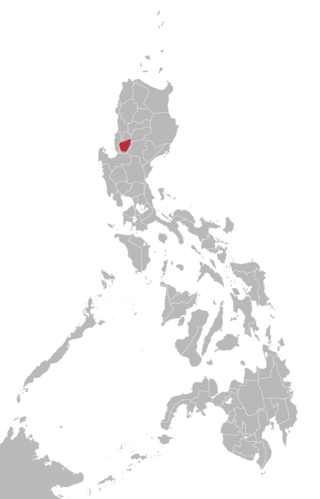Ibaloi language
| Ibaloi | |
|---|---|
| Ibaloy | |
| Ivadoy | |
| Region | Luzon, Philippines |
| Ethnicity | Ibaloi people |
Native speakers | 120,000 (2005 [needs update])[1] |
Austronesian
| |
| Language codes | |
| ISO 639-3 | ibl |
| Glottolog | ibal1244 |
 Area where Ibaloi is spoken according to Ethnologue | |
The Ibaloi language (ësël ivadoy, /əsəl ivaˈdoj/) belongs to the Malayo-Polynesian branch of the Austronesian languages family. It is closely related to the Pangasinan language, which is spoken primarily in central and southern Benguet, and western Nueva Vizcaya and eastern La Union. Its dialects include Daklan, Kabayan, and Bokod.
Ibaloi phonemes are similar to those found in other Philippine languages with a few exceptions. Many variants of the Ibaloi tongue have naturally occurring /f/, /dʒ/ and /v/, as in sifa (interrogative 'who'), ibjag ('to lose one's grip on something or someone, to let go') and devit (a traditional wrap-around skirt). /ʃ/ is also commonly heard in the La Trinidad valley and nearby areas, as in xima (a particle usually equivalent to the prepositions in, on, or to depending on the sentence construction), but may be occasionally heard as /tʃ/ in some communities.[2]
Phonology
| Front | Back | |
|---|---|---|
| High | i | |
| Mid | e | o |
| Close | a | |
| Labial | Alveolar | Palatal | Velar | Glottal | ||
|---|---|---|---|---|---|---|
| Nasal | m | n | ɲ | ŋ | ||
| Plosive/ Affricate |
voiceless | p | t | tʃ | k | ʔ |
| voiced | b | d | dʒ | ɡ | ||
| Fricative | f v | s | h | |||
| Approximant | l | j | w | |||
| Tap | ɾ | |||||
Ibaloi is one of the Philippine languages that do not exhibit [ɾ]-[d] allophony.
Examples
References
- ^ Ibaloi at Ethnologue (25th ed., 2022)

- ^ "Pesing Mansodat shi Inibaloi". ibaloy.com. Retrieved 2023-11-25.
External links
- Ibaloy orthography Archived 2020-11-09 at the Wayback Machine
- Ibaloy-language word list from the Austronesian Basic Vocabulary Database Archived 2013-06-05 at the Wayback Machine
- A handy guidebook to the Ibaloi language. Baguio City, Philippines: Tebtebba Foundation, 2010.
